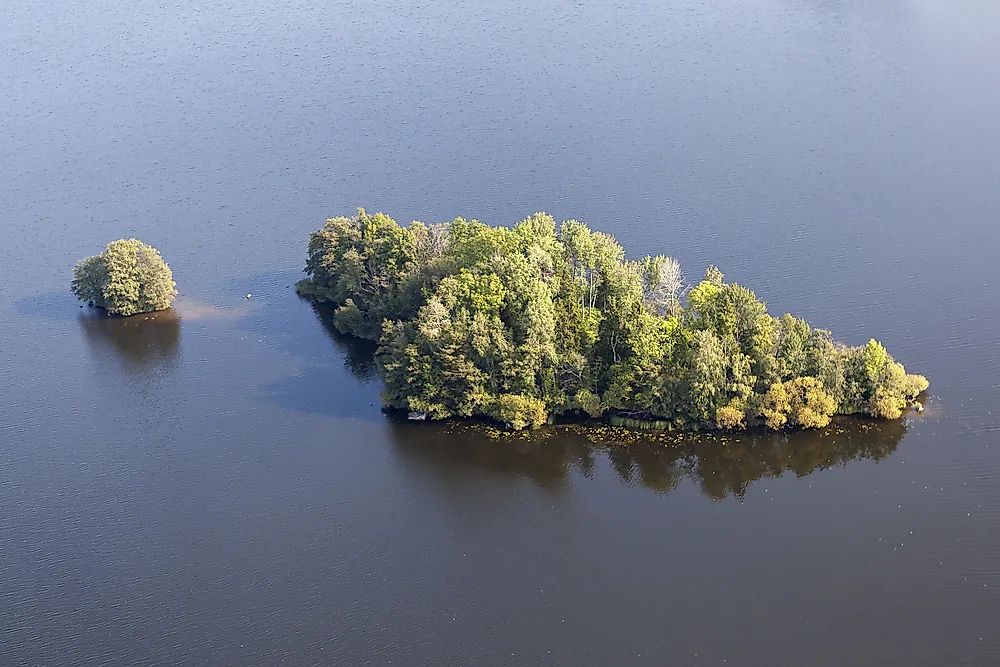How Are Lake Islands Formed?

A landmass surrounded on all sides by the waters of a lake is a lake island. Such islands are formed in various ways. Accumulation of sedimentation over a period of time, separation of a landmass from the mainland surrounding the lake by erosion, influences of earthquakes, volcanic activities, meteor impacts, etc., also might lead to the formation of lakes and lake islands.
Formation Of Volcanic Crater Lake Islands
Crater lake islands are found in crater lakes. Such lakes form in volcanic craters or calderas. A crater is a circular or oval basin surrounding the vent of a volcano. A caldera is a much larger depression that is usually formed when the magma chamber under the volcano collapses after emptying out the magma held within it. The collapse of the magma chamber results in creating a large depression that is called a caldera. Over time, a crater or a caldera fill up with water to form a crater lake. If the volcano restarts its activity or continues to spew out magma then a resurgent dome might be formed by the upliftment of the center of the caldera. This dome that protrudes out from the surrounding waters of the crater lake is a crater island. An example of such an island is the Samosir Island in Lake Toba in Indonesia’s Sumatra island.
Formation Of Impact Crater Lake Islands
Although rare, massive craters exist on the Earth’s surface due to the impact of an extraterrestrial body like a meteor or asteroid with the Earth’s surface. Such impacts leave behind extensive depressions on the ground which either get eroded over time or are filled up with water to result in the formation of impact crater lakes. Sometimes, when a complex impact crater is formed, a central peak of the crater emerges from the crater’s floor. If the crater is filled with water and the central peak emerges above the surface of the water, then it forms an island. The René-Levasseur Island located in Canada’s Lake Manicouagan is an example of such an island.
Formation Of A Floating Lake Island
Floating islands are more frequently found in lakes than in rivers and seas due to the absence of currents and tides in lakes. Such islands are formed of peaty masses of vegetation that rise up from the floors of shallow lakes due to the accumulation of gases as a result of decomposition of the vegetative matter. Such islands are ephemeral in nature and stay afloat till the gasses dissipate following which the vegetation sinks into the lake.
Artificial Lake Islands
Lake islands are also artificially built by people to serve various needs. Such islands might be constructed to relocate people from a densely populated area, to encourage tourism, to serve as quarantine stations, for flood protections, expanding agricultural lands, etc. Artificial lake islands might be created by deposition of natural or synthetic sediments on the lake bed or existing natural islands might simply be extended by deposition of debris. An example of an artificial lake island is the group of Uru islands located in South America’s Lake Titicaca.











